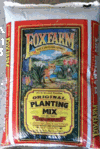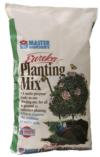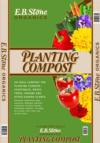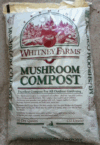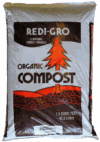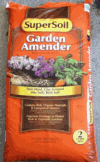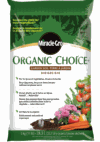What's in that Bag?—Soil Amendments
Chuck Ingels, Farm and Horticulture Advisor
UC Cooperative Extension, Sacramento County
Presentation developed for Harvest Day 2012
Click to download the handout "Analyses of Soil Amendments" that accompanied the presentation. (PDF 378KB in a new window/tab)
Organic soil amendments are products that are mixed into soil for the overall purpose of benefitting plant growth and crop production. Contrast that with mulch, which is placed on top of the soil surface to reduce soil moisture loss and water runoff, prevent weeds, and moderate soil temperatures.
Soil amendments improve coarse-textured (sandy) soils mainly by improving the water and nutrient holding capacity by the addition of organic matter. Fine-textured (clayey) soils are improved by creating larger soil pore spaces and improving soil aeration, which leads to better water infiltration and drainage.
Organic soil amendments contain plant nutrients, but most are not considered fertilizers because their nutrient content is often quite low, and because release of the nutrients to plant-available forms can take weeks, months, or longer depending on the product. The most important benefit of the organic matter additions is to provide an energy source for bacteria, fungi, and other microorganisms, as well as earthworms that live in the soil. These organisms create glues (polysaccharides) that hold soil particles together to create highly desirable soil aggregates. They also release plant-available nutrients as they die off.
From an environmental standpoint, using amendments from a local source can reduce fossil fuel use and air pollution compared to shipping products across the country. Consider producing compost at home, using well broken down local manure, or growing cover crops to add organic matter.
Soil Amendment Analyses
In July 2012, UC Master Gardeners purchased nearly two dozen organic soil amendments, also known as soil conditioners, from several retail outlets in Sacramento County. Samples were bagged the next day and taken to Sunland Analytical Lab in Rancho Cordova, who provided a discount on our analyses in support of Harvest Day at the Fair Oaks Horticulture Center. A soil analysis panel was selected that included the following tests.
% N—percent total nitrogen. Products ranged from 0.7 to 2.1% N. There is no threshold for how much N should be in a product. More important is the C/N ratio.
C/N ratio—carbon-to-nitrogen ratio. Ratios above about 30 (30% C to 1% N) result in nitrogen "tie-up" in the soil because soil microorganisms such as bacteria and fungi require both carbon and nitrogen in their diet. They feed on the carbon source (soil amendment) and extract nitrogen from the soil when the C/N ratio is over about 30. This temporarily deprives plants of nitrogen until the microbes begin to die off which often takes about 2-3 weeks. With amendments below about 30, the amendment will readily begin to release its nitrogen to the soil. The lower the C/N ratio the faster the release.
pH—the measure of acidity or alkalinity of the amendment, with pH 7.0 being neutral. A pH of about 6.5 to 7.0 is ideal, but pH 5.0 to 8.0 may be acceptable depending on the pH of your soil. Low pH materials such as sphagnum peat moss are best for blueberries and some ornamentals such as azaleas and camellias, but there are questions about the sustainability of increased harvesting of peat bogs in Canada and the northern US.
% Organic Matter—the measure of carbon-based materials in the product. Ingredients other than organic matter may include soil, nutrients, and other inorganic particles. There is no threshold for % organic matter.
Conductivity—indicates the amount of salts present, also called electrical conductivity or EC. Many salts are essential for plant growth, but excess salts in soil may be detrimental to plant health, especially for seedlings, transplants, and salt-sensitive plants, and to soil microbes. The threshold of salts in amendments depends on many factors, especially the salinity of your soil and water. If you have soil or water with elevated salt content, use amendments with lower conductivity - about 3.0 or lower. In most of the Sacramento area, water is low in conductivity, so the threshold is higher - perhaps up to 10.0.

Some of the products analyzed:
